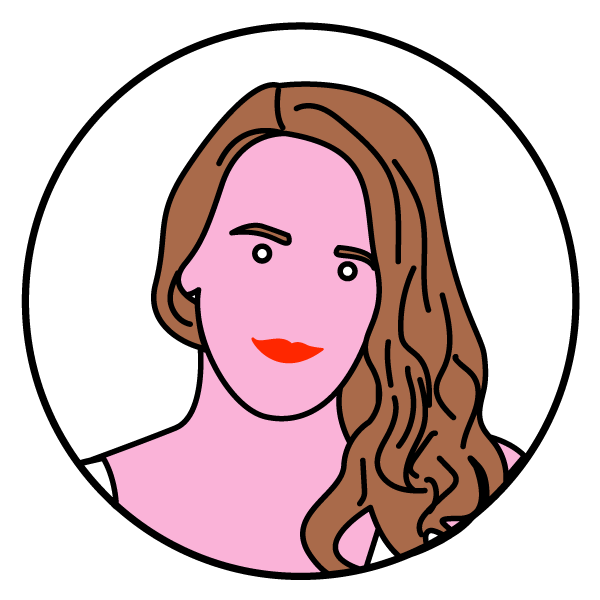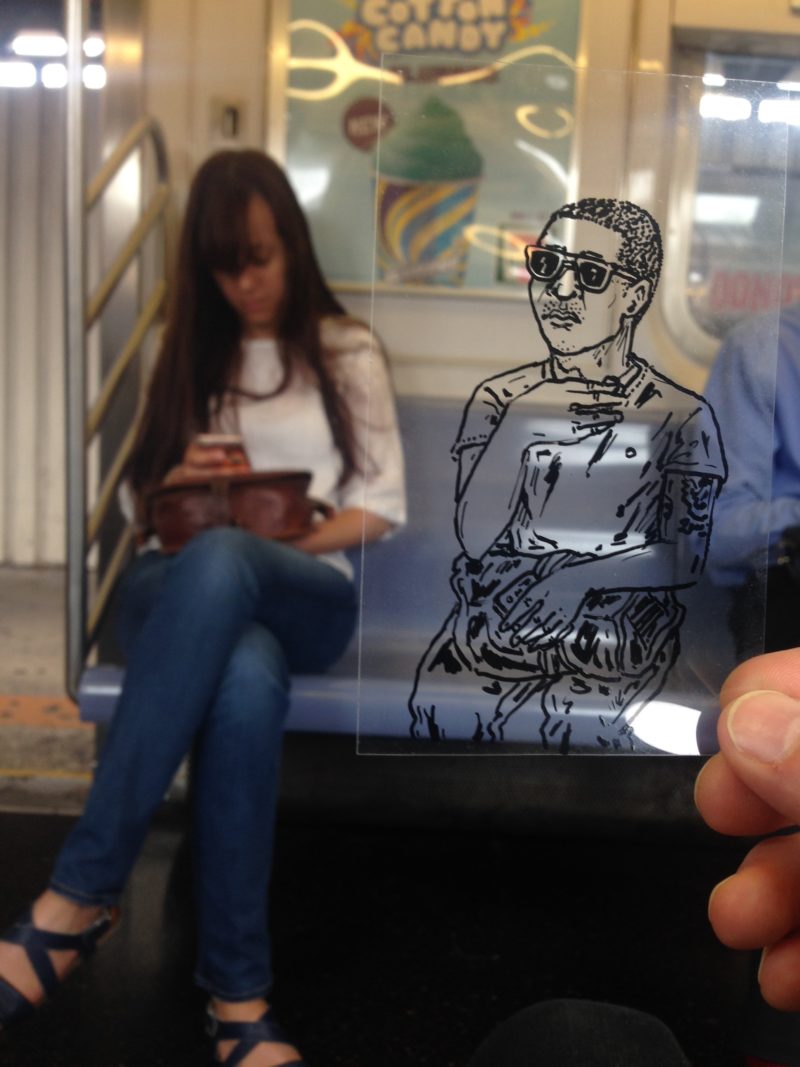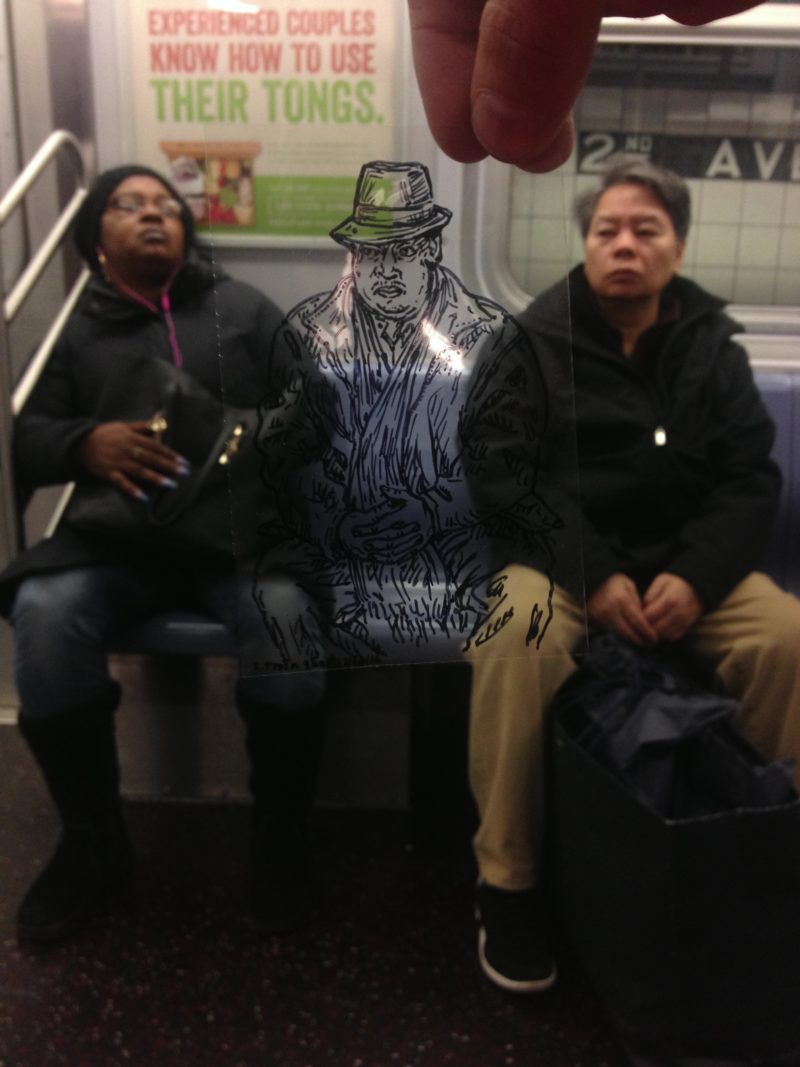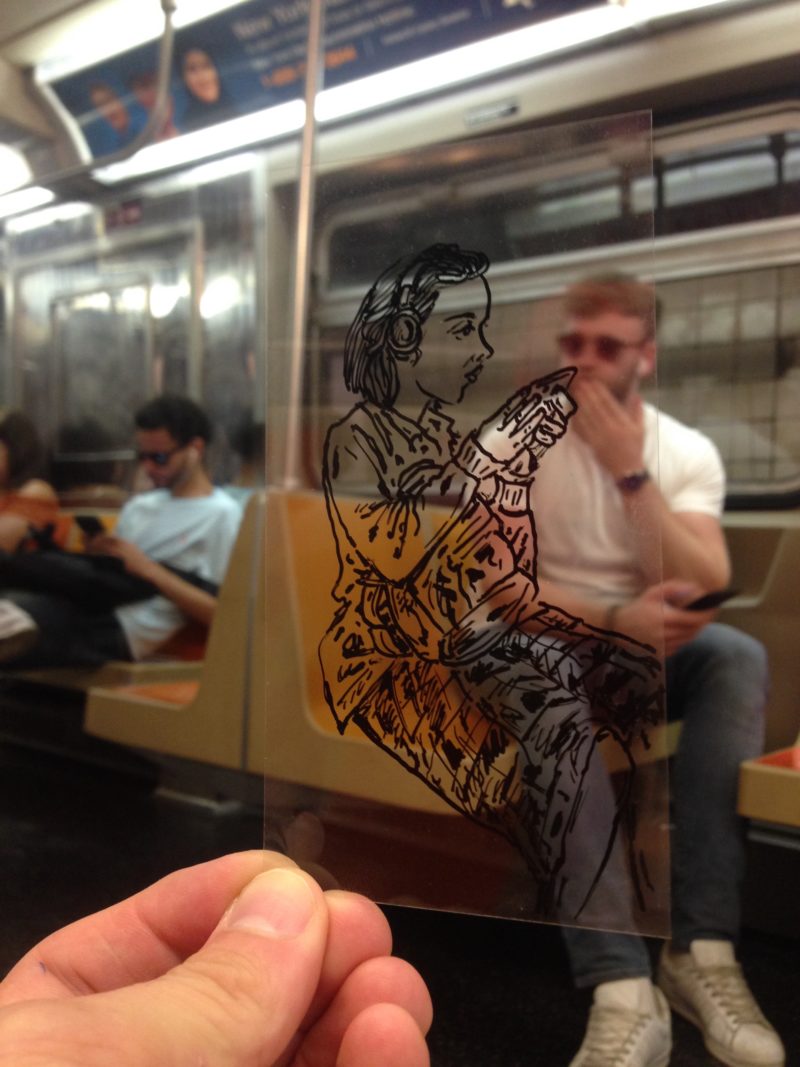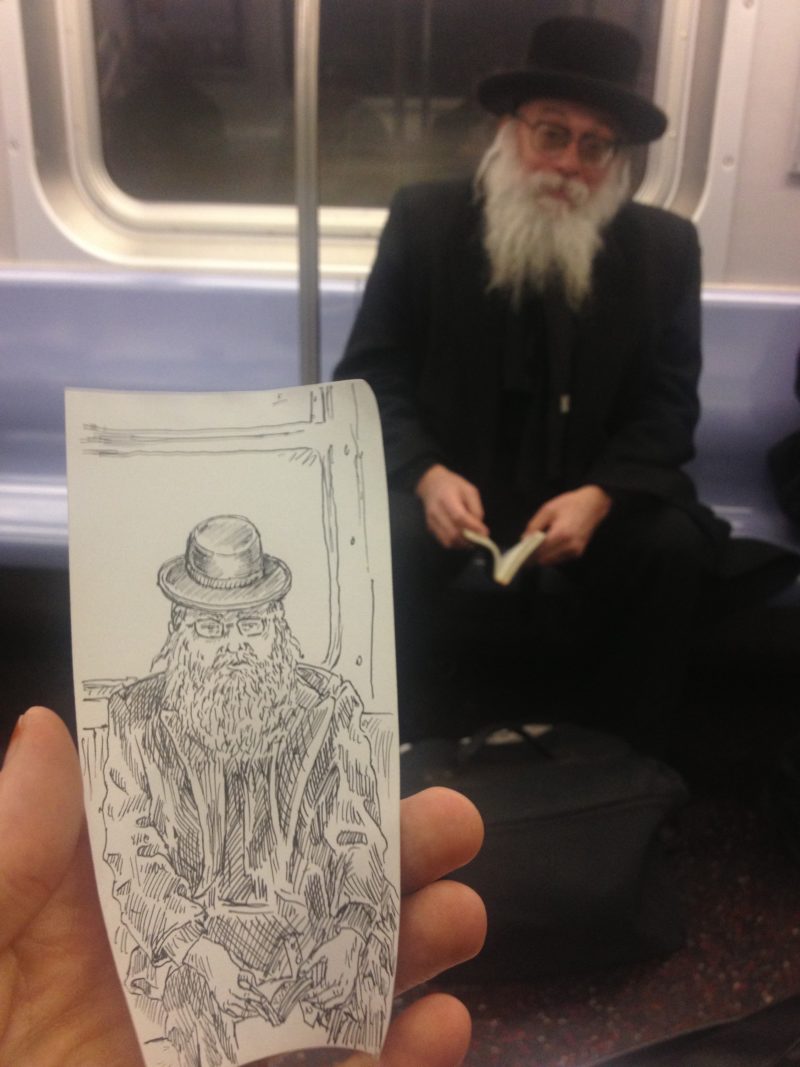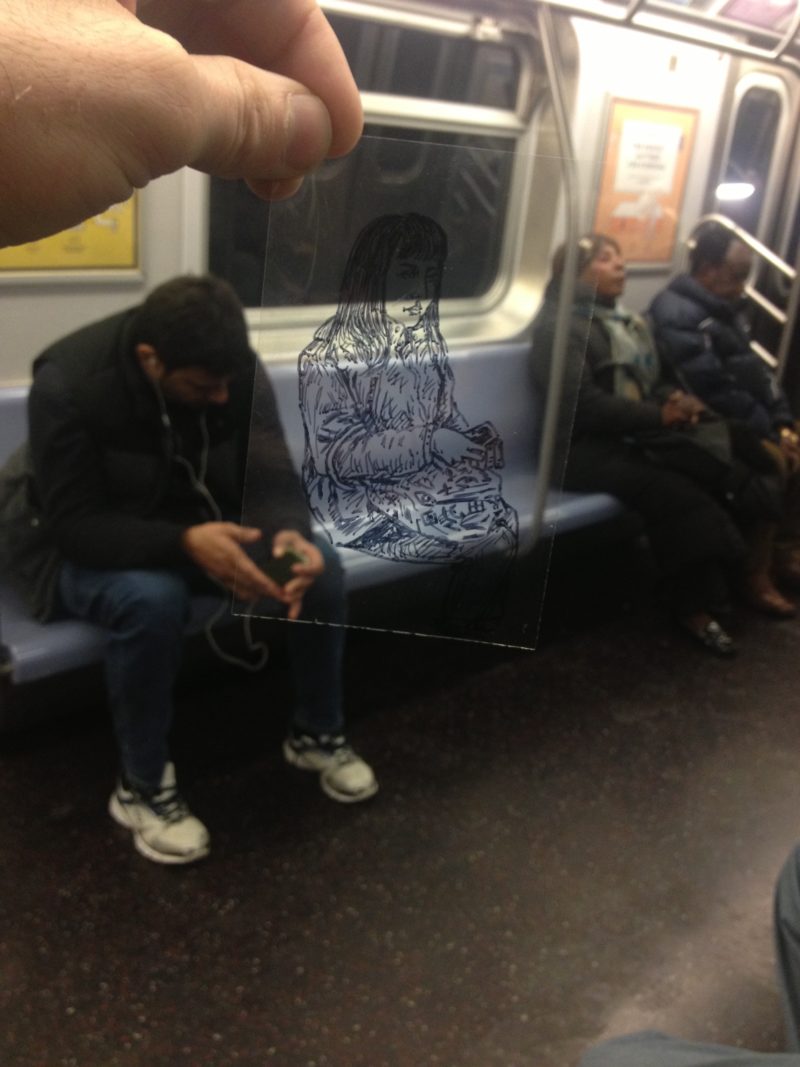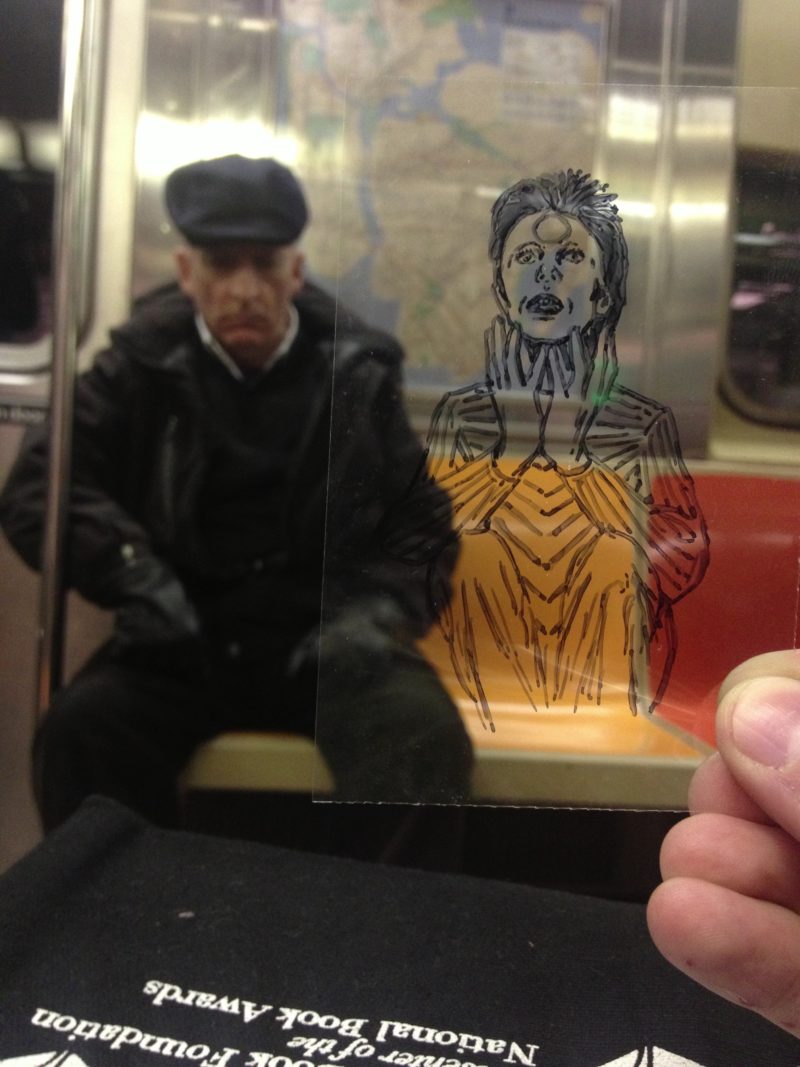
By now, I’m sure I’ve told just about everyone I’ve ever met about Chris Russell. His drawings are wide open, un-jaded and somehow totally new in their gaze. In his longtime series “Subway Ghosts,” he uses unconventional materials to draw strangers on the stage most available to him: the New York City subway system.
—Kristen Radtke
THE BELIEVER: How did this comic start?
CHRIS RUSSELL: When I moved to NYC about nine years ago, I basically had to adapt my daily practice from large scale painting to small scale (portable) drawing. I was working during the day, and in graduate school at night, and had neither the time nor space for a regular painting practice. This turned out to be a great thing, since painting only frustrated me, while drawing makes everything wonderful. The most consistent time I had for art was on the subway. For the first several years of living in New York, almost all of my work was done in accordion books that connected together to form a continuous landscape; this project has been ongoing, but every now and then between books I need a break from it. That’s how this “subway ghost” series started, when I happened upon a sheet of transparency paper in between working on two accordion books. The idea fit right into what I was already thinking about, the temporary, shifting nature of people, and the weird world of subterranean transportation.
BLVR: What’s your process like?
CR: For this “ghost” series, it’s a very basic but consistent process. I cut down pieces of vellum transparency paper into small pieces, and keep them in an envelope, labeled “GHOST BOX.” Hopefully there’s a seat open on the train, I sit down and start drawing whoever is sitting across from me, or whoever looks particularly interesting nearby. I learned quickly that I need a good permanent pen with thick black ink that dries quickly and won’t smudge. I learned that good vellum transparency paper picks up fingerprints easily, so I try not to touch anything but a bottom corner. I draw people entirely from life, then when the person I’m drawing gets up, I hold up the drawing on transparency, position my phone camera, snap a photo and convert it to black/white.
BLVR: Was any aspect of making this work particularly challenging?
CR: Aside from getting a seat on the train, taking a decent photo is the most challenging part of this work. It’s difficult to get the photo right, especially on a moving train with a crummy and very old phone. It usually takes five or six photos to get one that works in terms of positioning and the right balance of sharp focus on the drawing, and blurring of the background people. Also, I can’t predict when people will get up and leave the train, or when someone will stand right in front of me.
BLVR: What drives you to create new work?
CR: I need to have a daily practice, to get at least some drawing or painting in every day. Otherwise, what’s the point?
BLVR: Without naming any comics artists, what influences you most?
CR: I can’t name comics artists? Well, then I guess the answer would be music, Chinese landscape painting (17th century in particular), literature, favorite non-comics artists (I can name them, right?): Chaim Soutine, Henri Matisse, Cecily Brown, Francis Bacon, Fra Filippo Lippi, Feng Zikai, Marcel Duchamp. Or maybe an easier answer is just, the visual world.
BLVR: Which comic should we drop everything and read right now?
CR: Can I name three? Keren Katz’s new book The Academic Hour. Joe Sacco’s Safe Area Gorazde. Yoshihiro Tatsumi’s A Drifting Life.
BLVR: What are you working on next?
CR: I’m working on a graphic adaptation of Witold Gombrowicz’s novel Cosmos with Siglio Press, and also on a book of graphic journalism with Patrick Hilsman, based on interviews with Syrians in exile.

